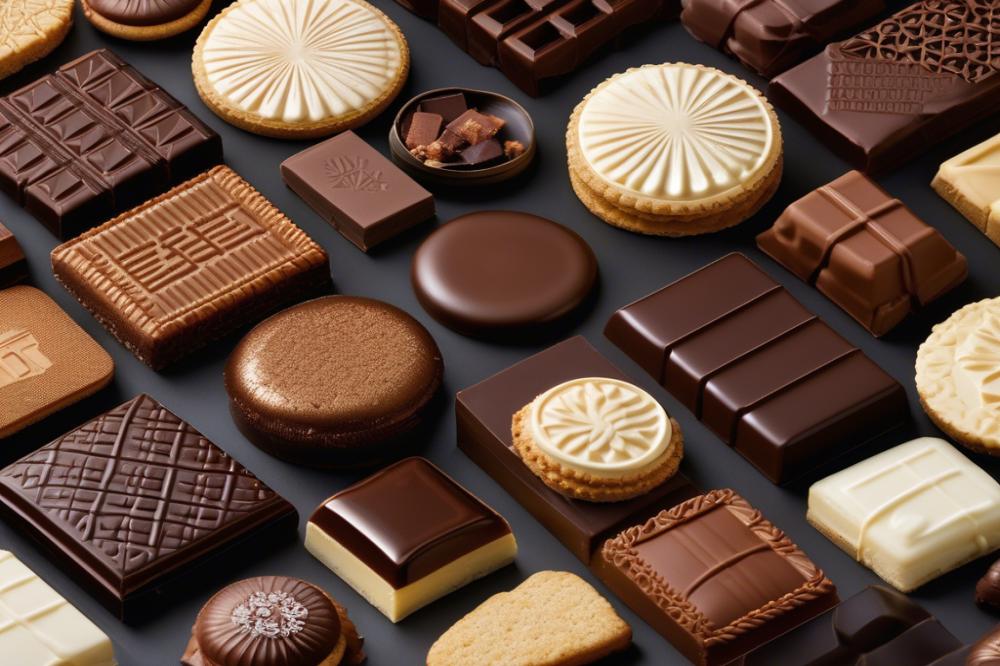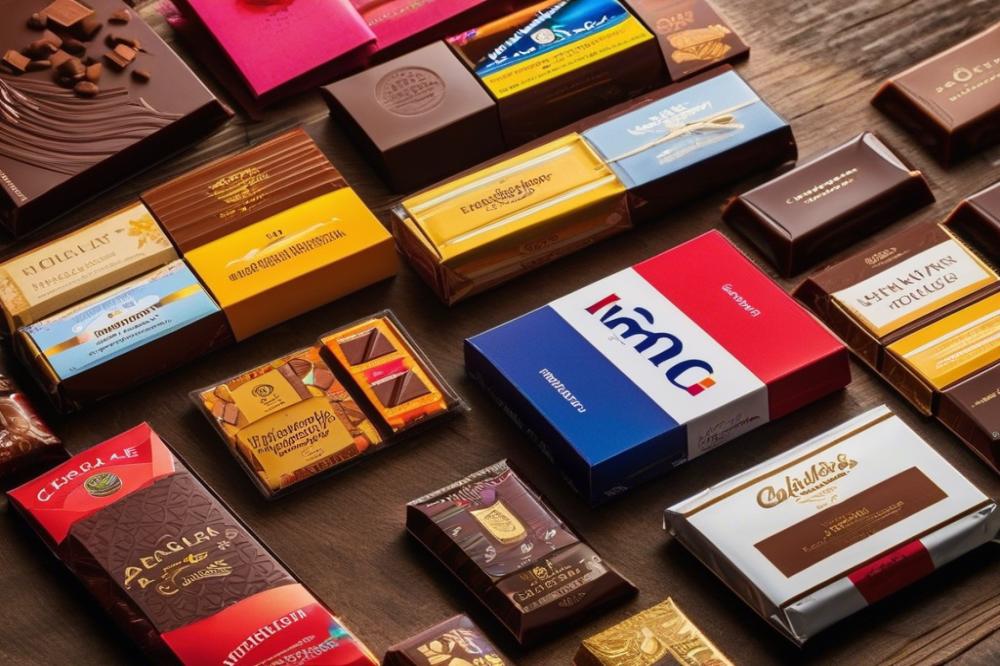Introduction
The world of chocolate biscuits is vast and varied. People around the globe enjoy these treats in countless forms. From the classic cookie to extravagant desserts, the appeal of cocoa is undeniable. Many cultures have crafted their own recipes, each adding a local twist. This diversity contributes to the global popularity these confectioneries enjoy.
crunch plays a vital role in the overall experience of enjoying these tasty snacks. The satisfying sound and feel of a well-made biscuit create a special moment. It’s more than just flavor; texture matters immensely. A crispy exterior contrasting with a soft interior can elevate a simple biscuit into something remarkable. It offers a sensory delight that many people seek when indulging in their favorite baked goods.
Understanding how to achieve that perfect crunch involves baking science and a little food chemistry. Ingredients like flour, sugar, and fat interact in fascinating ways. The right balance of moisture and fat content is crucial. Temperature also influences how these ingredients combine during baking. For instance, using butter instead of shortening can lead to different textures. Each recipe carries its uniqueness, requiring careful consideration of various cooking techniques.
In the quest for baking perfection, every detail counts. Experimentation with proportions and processes leads to different outcomes. Achieving the ideal chocolate biscuit isn’t just about following instructions; it’s about grasping the science behind it all. Ultimately, the journey into these principles opens up a world full of delicious possibilities.
Understanding the Components of a Chocolate Biscuit

Creating a perfect chocolate biscuit relies on a few key ingredients. Flour serves as the primary structure, providing stability and texture. Sugar contributes sweetness and balances flavors. Chocolate adds depth and richness, enhancing the overall experience. Fat, often in the form of butter, creates a tender crumb and contributes to that delightful crunch.
Role of Cocoa in Flavor and Texture
Cocoa holds a significant place in the flavor profile of these biscuits. It introduces chocolate notes without the added sweetness of chocolate bars. The presence of cocoa can also affect the overall texture. baking science suggests that cocoa can lead to a denser biscuit if used in larger quantities. This density alters the interaction between the ingredients during baking. Thus, adjustments in recipes are crucial to balance flavor and texture.
Impact of Moisture Levels on Biscuit Crunchiness
Moisture content plays a pivotal role in determining the crunch of biscuits. High moisture levels can prevent the desired crispness from forming. When baking, temperature also influences this aspect. A higher temperature can lead to rapid evaporation of moisture, aiding in achieving that crunch. Food chemistry shows how fat content interacts with moisture. This interaction can enhance or diminish the texture based on cooking techniques. Understanding how these elements work together is essential for anyone keen on mastering biscuit making.
The Role of Temperature in Baking

Ideal Baking Temperatures for chocolate biscuits
Perfectly baked biscuits require precise temperatures. Generally, the best range falls between 350°F to 375°F (about 175°C to 190°C). This warmth allows the ingredients to interact properly, enabling the right texture. Many recipes suggest starting at this range for optimal results. You can also adjust the temperature if you’re experimenting with different recipes. Testing various heat levels may yield a unique outcome, but a consistent starting point is key.
How Temperature Affects the Maillard Reaction
Understanding the Maillard reaction is vital for achieving the right crunch. This food chemistry concept describes the browning that occurs when amino acids and sugars combine under heat. Higher temperatures accelerate this process, creating that desirable flavor. Cocoa powder plays a significant role here, as it includes compounds that enhance the reaction. Without the correct heat, your biscuits may lose that rich taste, becoming bland and unappetizing.
Influence of Cooling Time on Biscuit Texture
Cooling time is just as crucial as bake time. Once out of the oven, moisture escapes, affecting overall crunchiness. If eaten too soon, biscuits might feel soft or chewy, missing that satisfying bite. Ideally, letting them rest provides a firm outer layer while maintaining a tender interior. Adjust the resting period based on your personal preference for texture and flavor. Each slight change in baking science can lead to different culinary experiences.
Fat Content and Its Influence on Crunch

When it comes to baking, understanding different types of fats is crucial. Butter, margarine, and oils each bring unique qualities to recipes. Butter is often favored for its rich flavor and ability to create a tender crumb. However, margarine can add moisture and strength, influencing texture. Oils, on the other hand, can lend a distinct crispness.
Fat plays a significant role in the melt-in-your-mouth experience. When heated, fat melts and coats the flour, creating a delicate structure that contributes to crunch. The balance of fat is vital. Too much can lead to a greasy result, while too little might produce a dry cookie.
Understanding the Balance
Optimal crunch comes from careful measurement of fat content in recipes. Some baking science suggests that a combination of fats can yield the best outcome. For example, using both butter and shortening can bring together flavor and texture. This blend allows for a more complex taste and an appealing crunch.
Temperature also influences how fat interacts with other ingredients. Baking at the right temperature ensures that cookies form properly. Too high a heat can cause quick melting, which might ruin crunchiness. Keeping moisture levels in check is equally important. If the dough is too wet, it can result in a soft texture, losing that satisfying bite.
The Role of Food Chemistry
Understanding the food chemistry behind baking can reveal why some recipes work better than others. Cocoa powder can alter the fat balance as well. Dark chocolate contains more cocoa solids and can absorb moisture, potentially leading to a less crunchy product. Experiment with different types of chocolate to find the perfect balance.
Cooking techniques further influence the crunchiness of baked goods. Techniques such as chilling the dough can solidify fat before baking. This step prevents spreading during cooking, keeping the biscuits thicker and crunchier. Baking time is another factor; leaving them in for just the right duration can transform a soft creation into a satisfying crunch.
Baking Techniques for the Perfect Crunch
Whipping Methods and Their Effects on Texture
Whipping the dough affects its final texture significantly. When air is incorporated into the mixture, it can lead to a lighter result. More air means a crispier biscuit. Conversely, over-whipping may lead to excess moisture. It’s a careful balance of ingredients and techniques. Using cold butter during whipping can keep the fat content solid. This approach helps to create pockets within the dough, enhancing the overall crunch. Experimenting with different whipping times can yield unique results tailored to individual tastes.
Chilling Dough Before Baking: Benefits and Techniques
Chilling the dough before baking is a technique rooted in baking science. It can control the moisture levels within the dough. A cool temperature allows the fat to solidify, resulting in a firmer structure. This step can prevent spreading during baking, leading to a thicker, crunchier edge. Refrigerating the mixture for at least 30 minutes can make a difference. Some recipes even recommend overnight chilling for optimal flavor development. Remember to cover the dough well to avoid drying out.
Use of Baking Sheets and Oven Positioning
Choosing the right baking sheet influences the biscuit’s crunchy exterior. Opting for heavy, uncoated metal sheets distributes heat evenly. An insulated pan might result in a softer outcome, which isn’t ideal. Additionally, position matters in the oven. Ideally, placing the dough in the center allows for even heat circulation. An upper rack can lead to brown tops but might not give the desired crunch. Keeping an eye on the temperature throughout the baking process is essential. Adjusting it as necessary ensures an even bake and the right amount of crispiness.
Recipe Variations from Around the World
Many cultures have their famous recipes for chocolate biscuits, each showcasing a local twist. In England, the classic digestive biscuit often has a rich, crumbly texture, influenced by the use of whole wheat flour. Meanwhile, in Italy, the beloved biscotti delivers a delightful crunch, thanks to its twice-baked method. These variations reveal how regional cooking techniques and ingredients shape flavor and texture.
Signature Techniques and Ingredients from Different Cultures
Known for their rich food chemistry, French bakers often incorporate beurre noisette, or browned butter, into their recipes. This ingredient not only enhances flavor but also affects fat content, contributing to a smoother crunch. In contrast, Australian Anzac biscuits use golden syrup, providing moisture that leads to a softer bite. The blend of baking science and distinct methods results in biscuits that can differ dramatically.
How Regional Variations Influence Crunch and Flavor
Temperature plays a vital role in determining biscuit texture. For example, baking at high heat can lead to a crisp outer crust with a chewy center. Cocoa content also varies widely from one region to another, influencing bitterness and richness. In some South American recipes, additional spices might be added, creating a complex flavor profile that can surprise the palate. Understanding the connections between cooking techniques and regional ingredients reveals much about the nature of these delightful treats.
Moisture levels contribute significantly to biscuit outcomes. A drier dough generally results in a tougher crunch. Browsing through various international recipes, one might notice the use of alternative flours, such as almond or coconut. Such substitutions can alter both taste and texture. When it comes to crunch, the balance between fat content and sugar is crucial. Classic shortbread relies on butter to provide a tender yet firm crunch, demonstrating the importance of ingredient combination.
Food Chemistry in Biscuit Making
Making biscuits involves intricate food chemistry that affects texture and flavor. Various chemical reactions occur during mixing, baking, and cooling. These changes contribute to the final product’s crunch. Understanding these processes is key for any aspiring baker.
Chemical Reactions Involved in Biscuit Texture
When dough comes together, a variety of reactions start. One of the most significant changes is the Maillard reaction, which takes place between sugars and amino acids. This contributes to browning and adds complex flavors. Additionally, the baking soda or powder activates during heating, creating carbon dioxide gas that helps the biscuits rise. This results in a light texture that still has crunch.
Understanding Gluten Formation and Its Effects on Crunch
Gluten is a protein formed when flour and water mix. Kneading enhances this formation, trapping air bubbles. The amount of gluten affects chewiness and crunchiness. Biscuits typically require minimal gluten development for that desired crispness. Lower amounts of water and careful mixing can minimize gluten strength. A balance must be struck to achieve the perfect crunch.
The Science Behind Achieving the Perfect Balance of Ingredients
Getting the right balance of ingredients is crucial in biscuit recipes. Cocoa adds flavor but can also change texture when combined with other elements. Moisture is a key factor; too much can lead to soggy biscuits. Fat content provides richness but affects how crunchy the final product is as well. Temperature plays a vital role; baking at the right heat makes a difference. A higher temperature can lead to a hard crust, while cooler baking might not create enough crunch.
Cooking techniques also influence the outcome. Chilling the dough before baking is one method that can help. This step firms up the fat, impacting how the biscuit spreads during baking. With all these factors to consider, even slight variations in recipes can lead to different results. Mastering food chemistry is essential for achieving a delicious crunch in every bite.
Bringing It All Together
Achieving the perfect crunch in your baked treats involves understanding key baking science principles. Temperature, ingredient ratios, and mixing methods all play crucial roles in your biscuit’s final texture. Choosing the right type of fat—be it butter, margarine, or even coconut oil—can drastically affect the outcome. Each choice impacts the moisture content and how the dough reacts in the oven.
Experimenting with various recipes and techniques can yield exciting results. Feel free to play around with different sugars, like brown or granulated. Each has its own properties that influence color and flavor. Additionally, try adjusting baking times and temperatures to find your ideal crunchiness. Remember, the kitchen is a creative space, and mistakes often lead to delightful surprises.
For those who enjoy baking, these small variations can transform ordinary moments into joyful experiences. Gathering friends or family around to share your creations adds an extra layer of satisfaction. The simple act of mixing, shaping, and baking turns into a delightful journey. In the end, it’s not just about flavor but also the memories made along the way. Happy baking!



